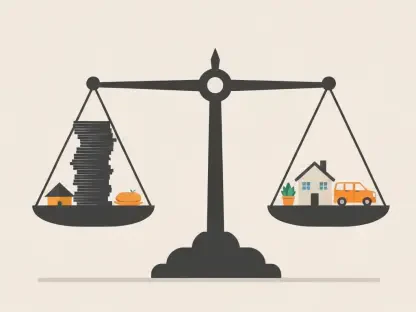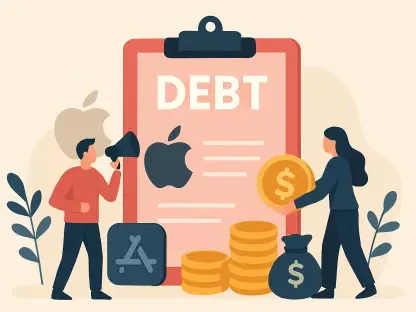Welcome to an insightful conversation with Priya Jaiswal, a distinguished expert in banking, business, and finance. With her deep knowledge of market analysis, portfolio management, and international business trends, Priya offers a unique perspective on the evolving landscape of financial regulation. Today, we’re diving into the recent buzz around the Federal Reserve’s concept of “skinny” master accounts, exploring their implications for traditional banks and fintech innovators, the Fed’s approach to risk and eligibility, and what this means for the future of payments and financial disruption.
Can you walk us through what a “skinny” master account is and how it differs from a traditional full master account at the Federal Reserve?
A “skinny” master account is essentially a scaled-down version of the full master account offered by the Federal Reserve. While a full master account provides comprehensive access to services like settling transactions, holding reserves, and making direct payments through the Fed’s system, a skinny account is more limited in scope. It’s primarily designed as a payment-focused account, without all the additional features or “bells and whistles,” as some have described it. The idea is to create a tiered system where institutions with varying levels of risk or different operational focuses can access Fed services in a way that’s tailored to their specific needs, rather than a one-size-fits-all approach.
Why do you think the Fed is considering a tiered system for master accounts, and what problems might this solve in the financial ecosystem?
The Fed seems to be addressing a couple of key issues with this tiered system. First, it’s about risk management. Not all institutions pose the same level of risk to the financial system, so offering the same level of access to everyone could create vulnerabilities. By tailoring accounts, the Fed can limit certain functionalities for higher-risk entities while still allowing them to participate in the payments system. Second, it’s a way to balance innovation with stability. Fintechs and smaller or newer institutions often struggle to gain direct access to Fed services because they don’t meet the stringent requirements for a full account. A skinny account could provide a middle ground, fostering inclusion without compromising the system’s integrity.
There seems to be some confusion about who can actually apply for a skinny master account. Can you clarify the eligibility requirements as they’ve been discussed recently?
From recent statements by Fed officials, it’s clear that eligibility for a skinny master account is tied to being a legally recognized depository institution, which typically means having a bank charter. This is a significant point because it excludes many fintechs or non-bank entities that might have assumed they could apply. The Fed’s position appears to be that only chartered banks or similar institutions can even enter the conversation for any type of master account, skinny or otherwise. This has created a bit of a hurdle for companies that are innovating in the financial space but don’t operate under a traditional banking framework.
How does this eligibility restriction impact fintech companies that are eager to gain direct access to Fed payment systems?
For fintechs, this restriction is a major roadblock. Many of these companies are focused on payment innovations and see direct access to the Fed’s system as a way to streamline operations and reduce reliance on intermediary banks. However, without a bank charter, they’re effectively shut out of the skinny master account process. This could slow down their growth or force them to pursue alternative paths, like partnering with chartered banks or applying for their own charters, which is a lengthy and complex process. It also raises questions about how inclusive the Fed’s approach to innovation really is, despite public statements supporting disruption in the payments space.
There’s been talk about tailoring master accounts based on an institution’s risk level. How do you think the Fed might go about assessing and categorizing risk for something like this?
Risk assessment for master accounts would likely involve a combination of factors. The Fed could look at an institution’s capital adequacy, its compliance history, the nature of its business model, and even the regulatory oversight it’s subject to. For instance, a well-capitalized bank with a long track record might be deemed low-risk and placed in a higher tier with full access. On the other hand, a newer entity with a less proven model or operating in a high-risk area like crypto might be placed in a lower tier, with more restrictions on what their account can do. It’s about matching access to the level of stability and trustworthiness an institution demonstrates.
How could the concept of a skinny master account affect the relationship between traditional banks and fintechs in terms of competition or collaboration?
Skinny master accounts could cut both ways. For traditional banks, there’s some comfort in knowing that only chartered institutions are eligible, as it maintains a certain barrier to entry for fintechs. This could be seen as leveling the playing field by ensuring that banks don’t face direct competition from non-bank entities with lighter regulatory burdens. However, if fintechs eventually secure charters or find workarounds, skinny accounts might still increase competition by allowing more players into the payments space. On the collaboration front, it could push fintechs to partner more closely with banks to gain indirect access, which might foster innovation but also reinforce the dominance of traditional players.
Some Fed officials have used analogies like a “gold medal” to describe full master accounts. What do you think this kind of language reveals about the Fed’s perspective on access to its systems?
That analogy suggests the Fed views full master accounts as the ultimate prize—something prestigious and reserved for only the most qualified institutions. It reflects a mindset that access to the Fed’s systems is a privilege, not a right, and that it comes with significant responsibility. By framing it this way, the Fed is signaling that it prioritizes stability and trust over widespread access. It also implies a hierarchy in the financial system, where only top-tier, low-risk institutions get the full benefits, while others have to settle for something less comprehensive, like a skinny account.
There’s been a mix of messages from the Fed about embracing disruption versus tightening eligibility rules. How do you reconcile these seemingly conflicting stances?
It’s a bit of a tightrope walk for the Fed. On one hand, they’re publicly encouraging innovation and disruption, especially in payments, because they recognize the value of new technologies and business models in making the system more efficient. On the other hand, their core mandate is to ensure financial stability, which often means sticking to strict rules and limiting who gets direct access to their systems. The skinny master account concept might be their attempt to bridge this gap—offering a way to include more players while still maintaining tight control over risk. It’s less about contradiction and more about finding a cautious middle ground.
What’s your forecast for how the introduction of skinny master accounts might shape the future of the payments landscape over the next few years?
I think skinny master accounts, if implemented, could have a significant but gradual impact on the payments landscape. In the short term, they’ll likely reinforce the dominance of traditional banks since eligibility is tied to having a charter. However, over the next few years, we might see more fintechs and non-bank entities pursuing charters or forming strategic partnerships to gain access, which could slowly diversify the field. It could also push the Fed to refine its risk assessment and tiering processes as they get feedback from the industry. Ultimately, while it’s a step toward inclusion, it’s not going to be a game-changer overnight—it’s more of a cautious evolution that balances innovation with the Fed’s need to protect the system.









